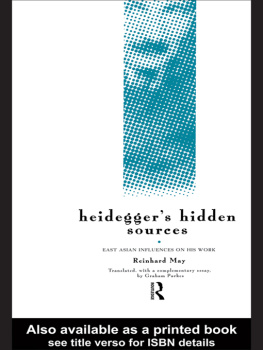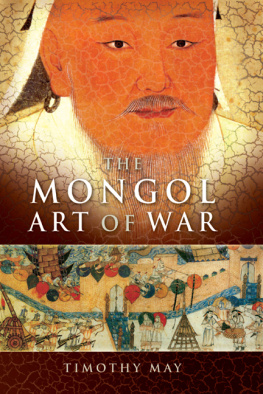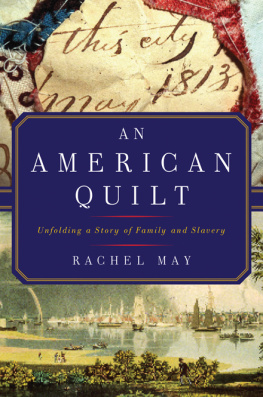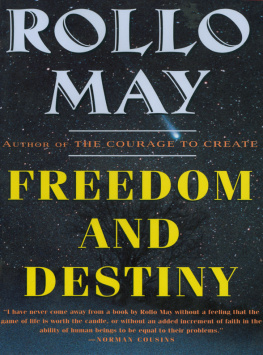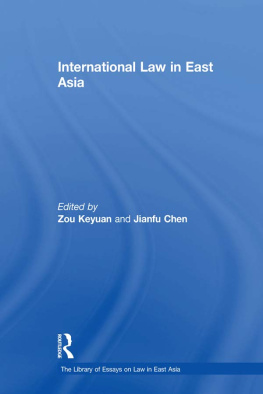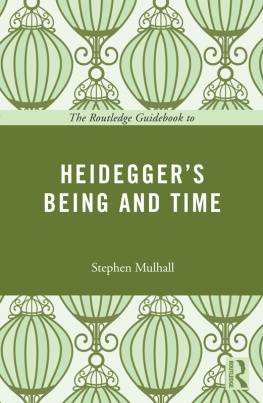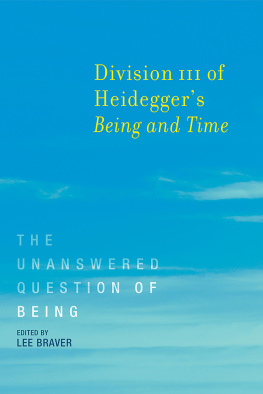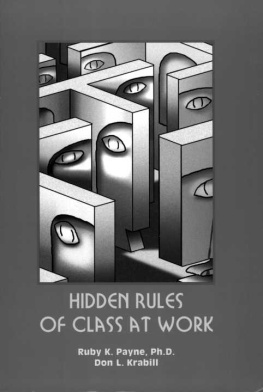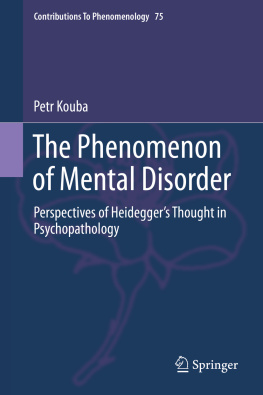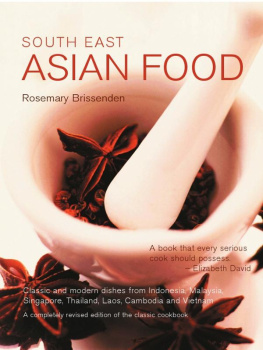May - Heideggers Hidden Sources : East-Asian Influences on his Work
Here you can read online May - Heideggers Hidden Sources : East-Asian Influences on his Work full text of the book (entire story) in english for free. Download pdf and epub, get meaning, cover and reviews about this ebook. year: 2005,1996, publisher: Taylor and Francis, genre: Science. Description of the work, (preface) as well as reviews are available. Best literature library LitArk.com created for fans of good reading and offers a wide selection of genres:
Romance novel
Science fiction
Adventure
Detective
Science
History
Home and family
Prose
Art
Politics
Computer
Non-fiction
Religion
Business
Children
Humor
Choose a favorite category and find really read worthwhile books. Enjoy immersion in the world of imagination, feel the emotions of the characters or learn something new for yourself, make an fascinating discovery.
Heideggers Hidden Sources : East-Asian Influences on his Work: summary, description and annotation
We offer to read an annotation, description, summary or preface (depends on what the author of the book "Heideggers Hidden Sources : East-Asian Influences on his Work" wrote himself). If you haven't found the necessary information about the book — write in the comments, we will try to find it.
May: author's other books
Who wrote Heideggers Hidden Sources : East-Asian Influences on his Work? Find out the surname, the name of the author of the book and a list of all author's works by series.
Heideggers Hidden Sources : East-Asian Influences on his Work — read online for free the complete book (whole text) full work
Below is the text of the book, divided by pages. System saving the place of the last page read, allows you to conveniently read the book "Heideggers Hidden Sources : East-Asian Influences on his Work" online for free, without having to search again every time where you left off. Put a bookmark, and you can go to the page where you finished reading at any time.
Font size:
Interval:
Bookmark:

Reinhard May has argued on the basis of close textual comparisons that Heideggers formulations of his major thoughts on Being, Nothing, the clearing, and on the complex relations between language, Way, and Saying, were influenced by his readings of German translations of Daoist and Zen texts and his collaboration with Paul Shih-yi Hsiao on translating selected chapters from the Laozi . Since Heidegger was so reticent about his acquaintance with East Asian ideas, it is hard to determine when he first started reading in that area. While it is likely, given the intellectual milieu in which he grew up, that this acquaintance came early, the first confirmed instance so far is Petzets report of Heideggers consulting the Buber edition of the Zhuangzi in 1930, an event that indicates a prior familiarity with that text. A significant feature, it seems to me, in Heideggers philosophical development, which is mentioned but not elaborated by Reinhard May, is the contact he enjoyed during the 1920s with several of the best minds in modern Japanese philosophy. The present essay aims, as a complement to the preceding discussion of Heideggers hidden sources, to sketch some relevant background for readers unacquainted with Japanese thought, and in particular to convey a sense of the major figures in this context: Tanabe Hajime, Nishida Kitar, and Kuki Shz.
If I may be permitted an autobiographical remark: before learning of Heideggers familiarity with Bubers Zhuangzi, I wrote an essay outlining the Daoist themes to be found in Sein und Zeit and suggesting some kind of pre-established harmony between Heideggers thought and Daoist ideas.which Sein und Zeit was being written. It is moreover likely, as I suggest below, that his acquaintance with Zen texts also dates from this period.
Two more general considerations tend to support the suggestion that Heidegger may have been influenced early in his career by East Asian ideas. First, with the publication of Being and Time in 1927, he inaugurated the most powerful destruction of the Western metaphysical tradition since Nietzscheseveral years after becoming acquainted with ideas from a quite alien yet sophisticated philosophical tradition that had been quite unmetaphysical throughout most of its history. Second, the enormous enthusiasm for Heideggers ideas in East Asian philosophical circles, and the fact that his later thinking has so many patent affinities (some of which he himself acknowledges) with East Asian thought, suggest some kind of prior harmony. In view of the conclusions drawn by Reinhard May, one is forced to entertain the possibility that this harmony may have been occasioned by some quiet appropriation on Heideggers part. Whereas the main text above lays major emphasis on Chinese works, what follows below will focus more on Japanese thinkers.
***
In 1921 Kuki Shz, the 33-year-old scion of a well-to-do aristocratic family, whose father, Baron Kuki, was director of the Imperial Museum in Tokyo, went to Europe to study philosophy. A man of unusually subtle intelligence, Kuki lived in Germany and France for eight years. From 1922 to 1923 he studied neo-Kantianism with Heinrich Rickert in Heidelberg. Possessing the means to do things properly, Kuki had Rickert give him private tutorials on Kants first Critique . During his time in Paris, Kuki wrote a draft of his best-known work, Iki no k z (The Structure of iki); and when he left France in 1927, it was for Freiburg, to study phenomenology with Husserlat whose home he would meet a young Dozent by the name of Martin Heidegger.
Another Japanese philosopher of note, Yamanouchi Tokury, went to study in Europe in 1921, as the first of several soon-to-be-eminent thinkers from Japan to make the Freiburg pilgrimage to study with Husserl (and then Heidegger).
Tanabe went to Berlin to work with Alois Riehl, but soon moved to Freiburg to study with Husserl. In Freiburg he was introduced to Heidegger who, though four years his junior, impressed him as brilliant. Since one sometimes hears of the Chinese and Japanese students who studied with Heidegger over the years, it should be noted that neither Tanabe nor Kuki was a mere student when Heidegger made their acquaintance. Tanabe had already published two substantial books, in the philosophy of science and philosophy of mathematics (1915 and 1918), and Kuki, who was a year older than Heidegger, had spent the previous six years studying philosophy with several of the great minds of the time.
Japanese commentators sometimes characterize in broad strokes the major difference between the philosophy of the so-called Kyoto School and the mainstream of the Western philosophical tradition by saying that, whereas European thought tends towards philosophies of life based upon inquiry into the nature of being, East Asian philosophies tend to lay greater emphasis on the topics of death and nothingness. This generalization can provide a preliminary orientation that is by no means misleading, especially since what makes Heideggers Being and Time such a revolutionary work is the central place it accords to das Nichts, as well as the existential conception of death developed thereas confirmed by the crucial role these ideas play in Heideggers subsequent pursuit of the question of Being. It is thus an extremely interesting question to what extent Heidegger had already developed his ideas on nothingness and death by the time of his first contact with the ideas of the Kyoto School.
Tanabe Hajime is widely regarded as being the second greatest figure (after Nishida) in modern Japanese philosophy and has been taken to be the founder of the Kyoto School.
An appraisal of the nature of the philosophical interchange between Tanabe and Heidegger is hindered by the almost complete silence the latter maintained about his Japanese colleagues and their ideas. And while Tanabe continued to refer to Heideggers works throughout his career, he was a reticent man and much of his correspondence has been lost or destroyed. However, approaching from the side of Tanabes references to Heidegger, let us see what reconstruction of their philosophical relationship is possiblefirst with respect to the topic of death and then to the idea of nothingness.
After his return to Japan in 1924, Tanabe published his essay A New Turn in Phenomenology: Heideggers Phenomenology of Life, the first substantial commentary on his thought to be published in any language. Missing from the transcript in the Gesamtausgabe but prominent in the conclusion of Tanabes discussion of Heideggers phenomenology of lifeis an account of the role played by the confrontation with death in the attainment of self-understanding.
Just as life is not merely a passage [of time], so death is not the mere termination or breaking off of such a passage. Rather death stands before Dasein as something inevitable. One can even say that it is precisely in the way life regards death and deals with it in its concern that life displays its way of being. If it flees from the death that stands before it as something inevitable, and wants to conceal and forget it in its concern with the world of relations, this is the flight of life itself in the face of itselfwhich means precisely that the ultimate possibility-of-being of life becomes an impossibility-of-being. On such a basis, to grasp Dasein in its primordial way of being is ultimately impossible. Because the way in which Dasein is concerned with deathfrom which it would like to flee but cannotinforms its very way of being, one must rather emphasize that it is just there, where life voluntarily opens itself to certain death, that it is truly manifest to itself ( JH 1078).
Font size:
Interval:
Bookmark:
Similar books «Heideggers Hidden Sources : East-Asian Influences on his Work»
Look at similar books to Heideggers Hidden Sources : East-Asian Influences on his Work. We have selected literature similar in name and meaning in the hope of providing readers with more options to find new, interesting, not yet read works.
Discussion, reviews of the book Heideggers Hidden Sources : East-Asian Influences on his Work and just readers' own opinions. Leave your comments, write what you think about the work, its meaning or the main characters. Specify what exactly you liked and what you didn't like, and why you think so.

